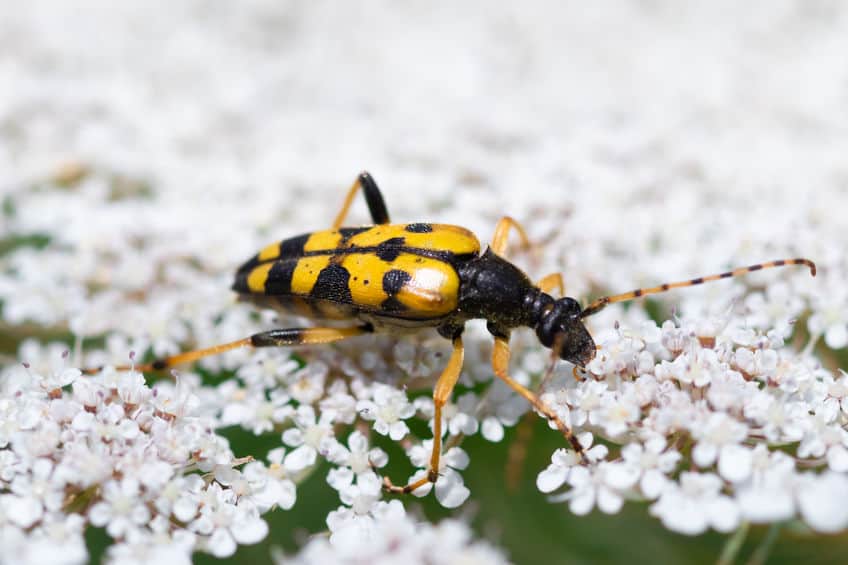The spotted longhorn beetle, Rutpela Maculata, is found in Europe. They are about 2 cm long (0.7 inches).
Why are they called longhorn beetles?
All long-horned beetles have the similar feature of very long antennae that resemble horns. The spotted longhorn beetle is no exception to this trait – where its antenna can be longer than its own body. The typical adult is 15-20 millimeters in length, but when their antennae are considered, that length can double – even triple in some cases.
Why do spotted longhorn beetles have spots?
The spotted longhorn beetle gets its name from the spots it conveys. Their color schemes mimic that of a wasp – a yellowish body that garners black spots and stripes. They have adapted to include these colors as protective mechanisms against birds – as they are deterred by the prospect of being stung.

Where are longhorn beetles found?
The beetle has a broad range of habitats. It can be found throughout the European continent – all the way from the United Kingdom to the expanses of Russia. The insect prefers environments with lots of trees to lay their eggs in – and plants like Hawthorns and Umbels to live. The climate of Europe is ideal for this type of flora to grow.
How long do spotted longhorn beetles live?
They live for about 2-4 weeks. The spotted longhorn beetle shares the same fate as many insects, as they don’t live a very long life. In the 2 to 4 weeks that they are alive, however, they get a lot done. They hatch and get to work right away – digging holes in trees to lay more eggs and keep their beetle species alive. Most of the time in between is spent frolicking in the flowers. They feed on nectar and are excellent pollinators.
What habitat can longhorn beetles be found?
These beetles thrive on wood. They dig into hardened European trees to lay their eggs. Because they are such masters of tearing into the wood – spotted longhorn beetles are considered a pest. They tend to find their way into buildings and structures, leaving damage behind. Their larvae live and feed on rotten wood – which is their ideal nesting environment. This is because it’s a more accessible food supply and easy to maneuver in and out from. These beetles get around by tunneling the wood with their strong stature – mainly in deciduous trees such as oak and willow.
